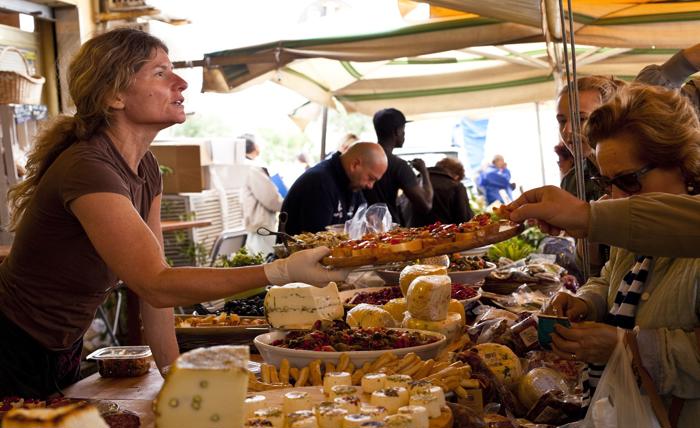A cultural melting pot for more than 3,000 years, Sicily and its cuisine has been shaped by the Greek, Arab, Norman, Spanish, and Italian flavors –- all products of sun, sea, and volcanic soil. Sicilian cuisine, however, is about more than food, but about its very essence, so here’s where to seek out the most unforgettable food experiences on the island.
1. Street Food in Palermo
Palermo is the heart of Sicilian street food culture. Here, food is theatrical. In the markets of Ballarò and Vucciria, you’ll hear oil sizzling, cleavers hitting cutting boards, and vendors shouting prices with that beautiful Sicilian accent while frying chickpea fritters. Start by ordering some fried rice balls called arancine (which is a must-try!) and a piece of a warm sfincione, a thick Sicilian pizza topped with tomatoes, anchovies, and breadcrumbs – these aren’t tourist traps, but what Palermitans actually have for lunch.
2. Fine dining in Ortigia
Syracuse’s island quarter of Ortigia is where Sicilian ingredients meet an inspiring modern presentation.This small peninsula blends Greek heritage with Mediterranean atmosphere, and so do its restaurants — serving refined dishes in ancient courtyards and restored noble palaces. For those in search of a genuine immersive exploration of local flavor, Palazzo Artemide Restaurants offer a full-on dining experience. Set within a building whose architectural integrity draws on the cultural richness of Ortigia itself, dining here is done with history and elegance in mind.
3. Fish-based dishes in Catania
Chaos is part of the charm at Catania’s ancient fish market — La Pescheria. It’s not a museum, it’s a functioning marketplace where the locals buy ingredients fresh each morning. Get there early, walk slowly, and then linger over lunch nearby: have grilled sardines or pasta alla Norma, the city’s own eggplant-and-ricotta staple, at modest trattorias that usually buy direct from the stalls you just passed.
4. Wine on Etna
Mount Etna, the highest active volcano on the continent, sets more than the horizon. Its mineral soil, cooled by mountain air, yields wines that are among Italy’s most compelling. Nerello Mascalese and Carricante grapes flourish on ancient terracing, tended by winemakers who balance flair with deep local knowledge.
Arrange a tasting at one of the properties near Milo or Randazzo, where vineyards lie on black flows of lava and ancient stone wine presses known as palmenti tell of centuries of heritage.
5. Back to the influences in Trapani
Along Sicily’s northwestern shoreline, the road between Trapani and Marsala is dotted with windmills and salt pans — a vista that seems to be unchanged since the Middle Ages. Sea salt harvested here became part of the local economy and culture. Local fare highlights the closeness to North Africa: couscous with fish or saffron-infused seafood couscous, are a must try.
Sicily itself and the Sicilian gastronomy are all about context — of time, people, place. This majestic place doesn’t just feed you, it invites you to taste its story: one bite, one location, one table at a time.







